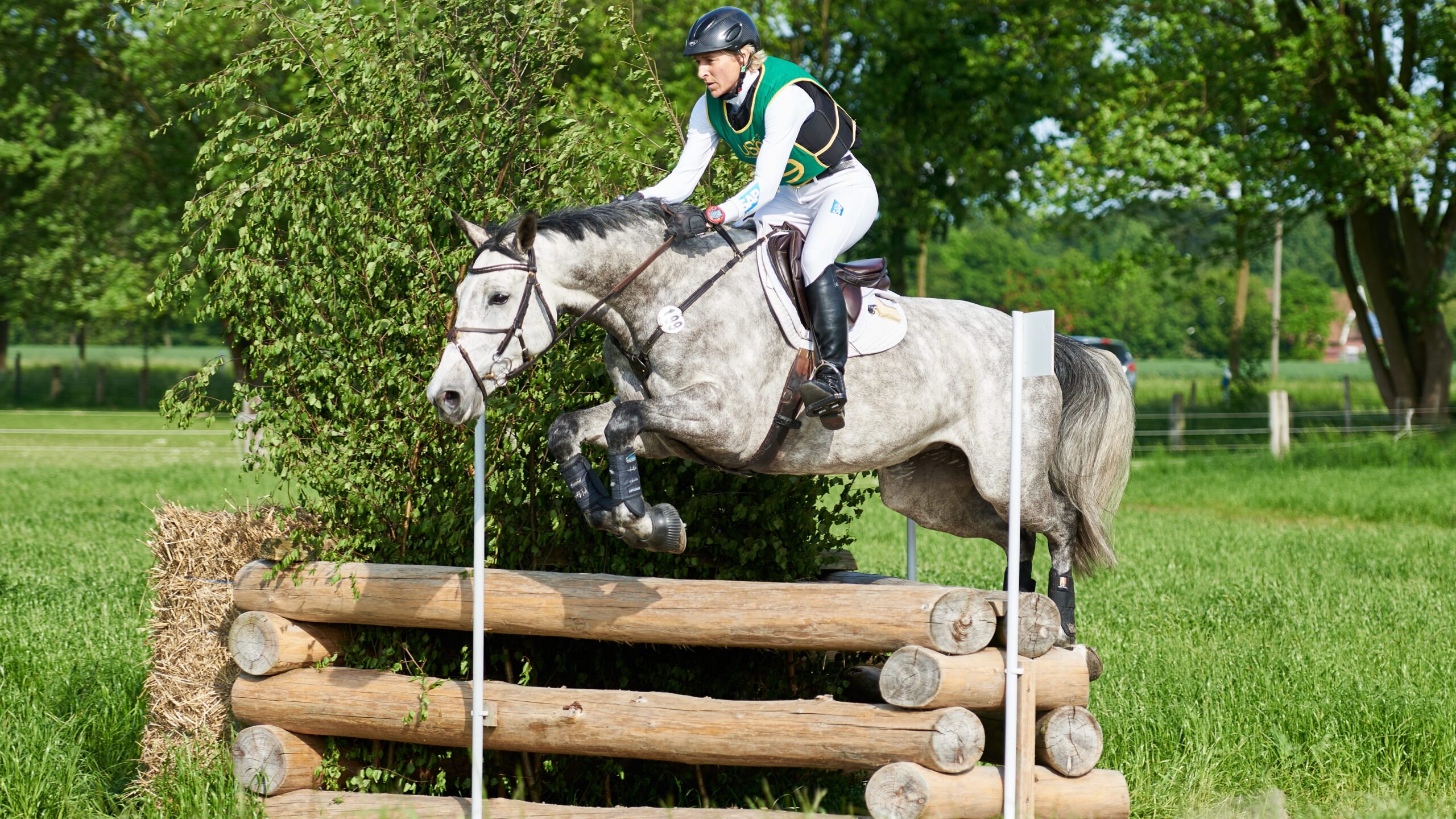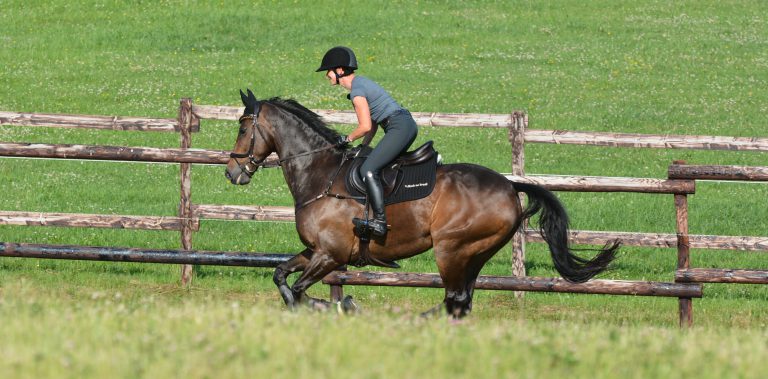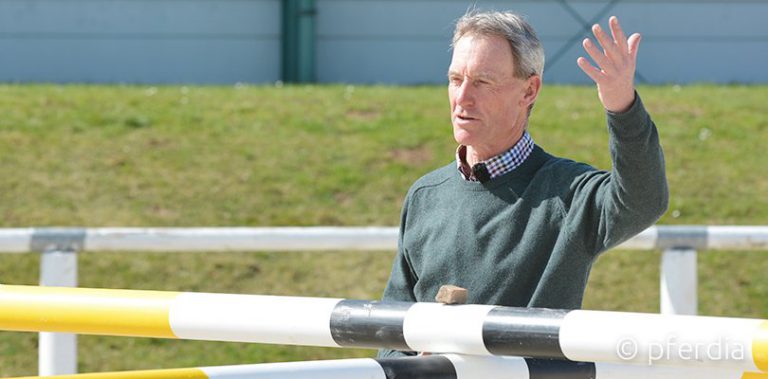The Ultimate Competition is the One You Have Against Yourself: The Art of Cross Country
Cross Country Jumping is not a competition for the faint of heart. It is a division of equitation requiring the cross country horse to showcase endurance, tenacity, grit, courage, resilience, as well as a, “My greatest competition is myself” kind of an attitude. It is a discipline, or an event depending on who you ask, that pushes a rider and her cross country horse to her physical and mental limits while simultaneously immersing everyone involved in an exhilarating experience. The demands for the competition are high, but the rewards reaped by the champions are far higher. Such is the draw to this intense style of competition.
What Exactly is Cross Country?
Technically speaking, Cross Country is not its own independent competition; it is not its own discipline or event. Cross Country is only one test of three, that combined, comprise the sport of Three-Day Eventing. The other two components of this sport include dressage and show jumping. At the lower levels and for youth competitions, one may see cross country being utilized as a singular event in its own right, but as difficulty levels reach mastery, it is only utilized as a component in Eventing.

How Does Cross Country Fit within the Larger Context of Eventing?
The Fédération Équestre Internationale offers a beautiful analogy for the role of Cross Country in the realm of Eventing. The FEI compares eventing to a marathon. Not only do both competitions utilize a three-component makeup to gauge competitor versatility, comparing Eventing to the human equivalent of a marathon gives individuals a better understanding of how incredibly difficult, how physically and mentally demanding such a competition is, as well as the stamina and endurance required to even be able to participate in such a grueling event.
How Does it Work? What is the Cross Country Horse asked to do?
In terms of Eventing, the competitor always begins with dressage. Philosophically speaking, this makes sense in that dressage serves as the underlying principles upon which both show jumping and cross country are built. For the dressage stage, at least in the United States, the test is even posted online prior to competition day, so riders have plenty of time beforehand to learn what it is that they will be required to do. Following the dressage test, riders will either compete in show jumping or cross country, depending on who is hosting the event, as well as the difficulty level at which the competitor is showing.
Attire: What to Wear on the Course
Nothing is more important in Cross Country than safety, for both the rider, as well as the Cross Country horse. Riders should always wear a SEI-approved riding helmet, securely fastened, for this event. As a matter of fact, competitors can even be eliminated for not adhering to this safety rule. Each country has their own expectation for approved headgear with the American standard being a helmet that meets the following guidelines: American: SEI ASTM F1163: 2004 onwards and SNELL E2001 or 2016.
Riders should also be wearing a long-sleeved sweater or shirt, typically white, and tan or buff-colored breaches. As far as footwear, competitors should be wearing black boots or black leather gaiters with a body protector, and boots absolutely must have a heel. Long hair should be kept neatly and secured or tied back for safety reasons. Finally, it is best to remove jewelry prior to competition time to prevent any potential injuries.
Equipment: How to Tack up Your Cross Country Horse
Riders should be utilizing several pieces of equipment for the Cross-Country Horse during the Cross Country part of Eventing, with the FEI publishing a lengthy text regarding rules and regulations for the cross country horse as well as approved and forbidden rider gear. Of the utmost importance is the following statement regarding irons, taken directly from the FEI Eventing Guidelines: “Any device which does not allow an immediate and unrestricted separation of the Athlete’s boot from the stirrup in case of a fall is forbidden.” Stirrups must be of the kind that allow for the immediate release of a rider in the case of a fall. Riders can never be in a position where they have fallen from their Cross Country Horse, but can not free themselves of the stirrups due to the type of gear, or tack, they have chosen.
Bridles must also be in good working order, and properly fitted on the cross country horse. The FEI rules and regulations also call for the mandatory use of a throatlatch. This piece of equipment secures the bit in the cross country horse’s mouth and ensures that the bridle cannot fully come off of a horse’s head. Likewise, saddles and saddle pads should also be properly fitted on each individual cross country horse, and must be in good working condition. For further details, please refer to the FEI’s handbook regarding official Eventing rules and regulations.
The Cross Country Test
The Cross Country test is really what sets Eventing apart, as far as an Equine sport. For riders and spectators alike, the experience of the cross country horse whizzing through a variety of set obstacles with speed and grace is breathtaking. During her run, the rider has the opportunity to showcase her cross country horse’s speed, his endurance, his athleticism, as well as his style and form. The length and difficulty of the course is contingent on the competitor’s ability level as well as the organization hosting the event.
The Course
Again, depending upon each rider’s level of expertise, they will be met with certain types, and a predetermined number, of obstacles. The course itself can range anywhere between 2¾-4 miles, or 6 kilometers in length and may have anywhere from 24-36 obstacles for competitors to clear. The obstacles themselves are fixed and typically natural in appearance, with the aim of blending in with the natural landscape, however, bold materials and colors may be utilized, particularly at the advanced levels to challenge the cross country horse’s willingness to approach something that may be unnatural or anxiety-producing.
Scoring
In this event, the competitor with the lowest score wins, so avoiding penalties during the completion of the course is a must. Refusals to jump are the cross country horse’s most common types of penalties, with each refusal costing competitors a total of twenty points. A second refusal of the cross country horse at the same obstacle costs riders an additional forty points, with a third refusal resulting in elimination. There are additional grounds for elimination including: jumping obstacles in the wrong order, jumping an obstacle in the direction it was not tasked to be jumped in, and a fall from the rider. A fall of the cross country horse; this is defined as when the quarters and a shoulder of the cross country horse touch the ground, results in what is referred to as a mandatory retirement.
Optimum Time & Time Faults
For every course, organizers determine what is referred to as the optimum time, or the ideal amount of time it should take for a competitor to complete the course, as a whole. Completing the course within this time results in no penalties, whereas taking longer than the optimum time to complete the course will accrue penalties. Competitors will receive 0.4 penalties for every second that they exceed the optimum time, with their final time always being rounded up to the nearest whole second. Naturally, it is the aim to get as close to the optimum time as possible, while ensuring the safety of oneself and his or her cross country horse.
What are the Skills Involved When Competing With A Cross Country Horse?
There are a variety of skills a cross country horse must possess to be a successful competitor. First of all, it is essential that the cross country horse possesses and have experienced foundational dressage training so that their bodies and minds are prepared for the caliber of performance that Eventing, and subsequently Cross-Country demands.
Further, possessing a sense of direction, speed, being able to establish and maintain a consistent rhythm, being balanced and having good timing are all quintessential components of the Cross-Country competitor. There will be moments where, as a team, you and your horse will need to make split-second decisions; will need to adjust approaches and modify what you originally intended to do, and as partners collaborating out on the course, you want a horse with a thoughtful disposition and a positive attitude.
The Best of the Best
In the world of competitive equestrian sports, no single event paints a more complete picture of the developed horse than Eventing, and Cross-Country is a huge part of that. Cross Country Jumping showcases each horse’s athletic prowess, style and grace, and ability to navigate the natural world in a beautiful way. In the words of a competitive eventer, “This sport has made and ruined my life. I have been hurt and jealous; mad and frustrated. I’ve missed out on a lot of things, and I’m so far from any and all goals. But it’s worth it. This sport has challenged me. This sport chose me. I won’t give up. I can’t give up. I am now strong, courageous, and amazing. I am fearless. I am an equestrian.” Are you?
More about Cross-Country

Eventing: From the Dressage Ring to the Cross Country Start Box
If there was one ultimate test to gauge athleticism in humans, what might that test be? In the world of equestrian sports, the answer is clear, and that answer is Eventing.

Jumping Cross Country: Chris Bartle’s Tips for a Safe Seat!
British eventing champion and German team trainer Chris Bartle holds seminars on the best ways to stay safe in the saddle when facing tricky situations on cross country courses, from slipping the reins to the “Oh shit!” position.
